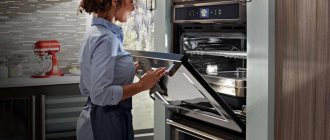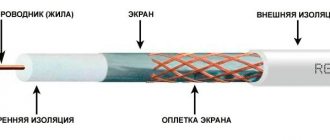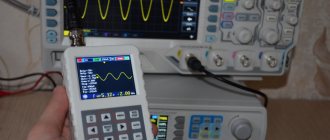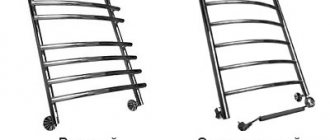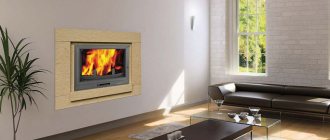Installation type: independent or dependent cabinet
With an independent oven, everything is more or less clear: it is an appliance independent from other kitchen appliances, the only requirement of which is to connect to the electrical network.
An independent cabinet can be built into any location
In the oven itself, several blocks are mounted at once: the oven itself, heating elements, fans and, most importantly, an electronic panel with its own processor where culinary programs are stored. An independent oven can be installed almost anywhere in the kitchen - this, by the way, is an additional convenience of stoves and ovens that run on electricity. Since they do not use gas for cooking, there is no need for a hood. Those fumes that food gives off during baking are normally removed using kitchen ventilation, and freedom of location becomes a big plus. The oven can be placed not only in a bedside table or under the work surface, but also in a column cabinet at chest level.
Electric oven elements
The dependent built-in oven is combined with a hob. Although the modules are installed in separate slots, they have a common control unit, electrical cord and are connected by wires. This means that it will not be possible to separate them from each other, and the idea itself does not imply this. The layout resembles a stove, only it is designed much more aesthetically and with technical know-how. Of course, dependent ovens have disadvantages: if the electronic unit or display breaks down, both the hob and the oven will fail. But if you are buying equipment for a new apartment, you can save money by buying a kit. In addition, you don’t have to go through the hassle of choosing two different products based on design.
Dependent oven connected to hob
Oven sizes
Contents: 1. Standard sizes of built-in ovens 2. Large 3. Small 4. Compact 5. Non-standard 6. Electric parameters 7. Gas ovens 8. Dimensions of a kitchen cabinet 9. Dimensions of a niche for built-in
Built-in ovens can be either dependent or independent, but their dimensions are not very different. The most important parameter of built-in appliances is the width; first of all, it determines whether the existing cabinet will fit or not. An incorrectly installed device can cause a fire or become unusable very quickly.
Standard sizes of built-in ovens
To be precise, the width of built-in ovens is 59.5 cm, but manufacturers round it up to 60 cm. Therefore, to find out more precisely the dimensions of the niche, you need to look at the technical documentation. The average dimensions of modern devices usually correspond to the following values:
- width 60 cm;
- height 60 cm;
- depth 55-56 cm.
At the same time, built-in ovens are also classified as large, medium and narrow, or small.
Large
Large-sized ovens are designed for a volume of over 55-60 liters and usually have several cooking levels (from 3 to 5). Some manufacturers of premium equipment, for example, Asko, Bosch, Smeg, provide them with telescopic guides.
As for the parameters, they do not exceed 60 cm in all three dimensions, with the exception of wide models, which will be discussed in more detail in the section on non-standard options.
Little ones
The smallest ovens have a height of 36 cm. They can hardly be called multifunctional; they are usually designed for a volume of up to 25-30 liters and are purchased as additional equipment for a large oven or multifunctional microwave. The standard width of these is 60 cm, the depth is 54-56 cm. Another option is models with a minimum width of 30 cm. Their depth is also standard, the height can vary from 45 to 60 cm. Usually they are built into a column with other equipment or in hanging cabinets at chest level.
Compact
Narrow ovens have a height of 45 cm, usually they can hold up to 45 liters, less often 50 liters. They are not inferior in width to standard options; the depth can be from 53.5 to 56 cm. Among the manufacturers of compact models, they are mainly European: Korting, Schaub Lorenz, Maunfeld and others. There are also models with a width of 50 cm, their depth can reach 60 cm.
A classic example of a narrow oven is the Korting OKB 7931 CMX. This model is suitable for a small kitchen up to 6 square meters. m, height 59.5 cm, depth 58 cm, width 45 cm. Useful chamber volume - 45 l, 4 cooking levels in total. At the same time, it has catalytic cleaning, grill, convection, defrost function and timer.
Non-standard
Non-standard ones include wide models. They are not often found in stores and are usually supplied to order. The width of such devices is 80-90 cm, although there are also 70-centimeter ones, the height is 48-50 cm, the standard depth is 55-56 cm. The volume is more than decent, there are devices for 75-80 liters. Wide ovens are produced by Miele, Smeg, Gaggenau and some others.
Electrical parameters
The parameters of the ovens are tied to the standard dimensions of the hobs. The minimum width of a built-in cabinet, whether dependent or not, is 45 cm. But the largest range of standard options is 60 cm. You can also find models of 70 and 80 cm, these are wide ovens that are more often used in catering establishments and canteens at enterprises.
The height does not differ in variety, the most popular parameters are 45 cm for narrow ones and 60 cm for standard ones. The depth can vary from 55 to 60 cm. In addition to technical parameters, we advise you to look at the functions of self-cleaning, defrosting and the presence of automatic programs, because we choose equipment not only on the basis of “as long as it fits”, but on functionality.
Gas ovens
Devices running on “blue” fuel are not too different in size from electric ones. We will not touch on the pros and cons of each type, because a lot depends on the cost of utilities, frequency of use and some other nuances.
Average dimensions of standard gas ovens:
- width - 45 cm (narrow), 60 cm (standard);
- depth - 55 −60 cm;
- height 45 cm (compact), 60 cm (standard, large).
It should be noted that for your own safety, we advise you to choose models with gas control and cooling, which guarantees protection against overheating and will protect you from being burned on the facade.
Kitchen cabinet dimensions
For built-in ovens and microwaves, cabinets with the following dimensions are usually produced:
- width 60 cm;
- depth 56.3-56.5 cm;
- height (with plinth) - 82 cm.
Usually the dimensions of the box are sufficient for standard models, but we still recommend checking with the seller for installation dimensions. If you are going to build devices into a column, then the height of the pencil case no longer matters, but the width should be 60 cm (maybe a little more by 1 cm, then choose devices with a facade that covers the joints). The depth is also usually standard 56.3-56.5 cm. Cabinet-tables have more variations in depth - from 54 cm to 56.3, so pay attention to this type of furniture if you have a compact, shallow model.
Dimensions of the niche for embedding
The installation dimensions of standard ovens are usually (W x D x H) 595 × 560 × 595 cm. A niche in a cabinet or table should meet these parameters. Typically, furniture manufacturers adhere to these parameters, so there is no need to call craftsmen to file or enlarge the frame. Note: installation dimensions may differ from those indicated on the website, since manufacturers often round to the nearest centimeter.
In the TechnoPride store, each device has Russian-language instructions and a wiring diagram, so there will be no problems with integrating the equipment. If you do not want to do the installation yourself, our specialists will quickly and efficiently carry out all the necessary procedures. Within the Moscow Ring Road, delivery and installation are free of charge.
Sizes and dimensions: how to choose?
It would seem that everything is clear here: for a large family you need to buy a spacious oven, and for one or two people you need to buy a compact one. But it all depends on the personal preferences of the user and the size of the kitchen. For example, a person who lives alone likes to bake geese and turkeys, then it is obvious that he will not like the compact, since there may not be enough space for the bird. If such a lover of gastronomy has a small “Khrushchev” kitchen, where in addition there is already a furniture set, a refrigerator and maybe even a table, then nothing but a compact will be able to be built in properly.
Typical dimensions of a built-in oven
Here is a list of standard sizes produced by manufacturers of built-in electric ovens:
- Standard. Both the width and height of the device are 60 cm along the front panel, the built-in part is narrower. This size is universal and will suit most housewives and cooks.
- Compact. The width of such ovens is standard, but the height is reduced to 45 cm. This is logical if you do not place more than one tier of food in the oven. Suitable for installation in equipment columns. Then you can place a microwave and a coffee maker below and above the oven.
- Narrow. With a standard front height, the width is reduced to 45 cm. This is a godsend for a small kitchen. This width is enough to bake a cake crust, but this oven will easily fit even into a narrow cabinet.
Example of a narrow oven - Wide. Where lack of space is not an issue, but a lot of cooking is done in abundance, a wide oven will come in handy. Its height is 60 and its width is 90 cm. It’s hard to even imagine what product might not fit into such a spacious oven. A must have for a large kitchen where two families cook.
- Wide compact - parameters 90 by 45 cm. A rare option when the width is needed, but in height you need to gain a couple of centimeters. This option is suitable for loading large baking sheets and dishes.
Video - Choosing a built-in oven
Oven dimensions and working volume
Ovens are standard, compact and narrow.
The height of full-size ones is about 50-60 cm, while compact ones make do with forty to forty-five centimeters of free space. The standard depth is fifty to fifty-five centimeters, width is about sixty centimeters, but there are also wider ovens. Narrow models cost forty-five centimeters in width, the height of such ovens is sixty centimeters, and the depth is about fifty-five. The working volume of a built-in oven in different models can range from 20 to 160 liters. Which one is better to choose? For a small family, as a rule, a 50-liter device is sufficient.
Oven control system
Typically, the more expensive the electric built-in oven, the more advanced its electronic components are, and the more culinary possibilities can be realized when using it. The design of the controls itself is divided into electronic and electronic-mechanical.
- Electronic-mechanical control is a tribute to traditional toggle switches and verniers. Rotary switches with beaks and a graduated scale will be close to older people and lovers of vintage performance. After all, it’s just a drive anyway: temperature programs and a timer are connected to electronic microcircuits. True, such devices do not have advanced intelligent control. But many people don’t use them.
Electro-mechanical oven control - Fans of electronic novelties will appreciate the fully electronic controls. Buttons are a thing of the past—touch panels are now ubiquitous. Often they are combined into a single block with a display, which displays the necessary pictograms, and even photos of ready-made dishes. Advanced models are even equipped with a USB connector and their own processor. Such devices contain entire combinations of modes for preparing specific dishes, down to the degree.
Pictograms are clear and simple
Management specifics
Ovens can be divided into three types of control:
- Mechanical system;
- Electronic system;
- Combined system.
The manual control system has a small set of functions and controls. It's quite reliable. In the absence of light, operating the stove will not be difficult. All available models are manually controlled.
Using switches, you can adjust the temperature, cooking time, and various cooking modes. The regulators are conveniently arranged. To prevent accidental switching, they are recessed in the housing.
Electronically controlled ovens have many built-in cooking programs. Adjustable via touch panel or buttons. The control system is so flexible that it allows you to make changes in the selected mode. The panel has a built-in display that displays all the necessary data.
- Hangers for displaying clothes
Daily office cleaning
Commercial property maintenance: proper office cleaning
One of the disadvantages worth noting is the inability to control processes if the sensor breaks down. Also, during the absence of light, using the stove will cause many difficulties.
According to numerous reviews, combined control is the most convenient type. These are some of the best built-in ovens. They have manual temperature controls. Other functions such as a timer indicating the time are shown on the display and can be adjusted on it.
The modern functionality of ovens allows you to select up to 15 temperature modes. Some models have fan convection, which is built into the back wall of the device. Heat distribution occurs evenly.
Today, manufacturers produce ovens of a wide variety of appearances. This allows you to choose a model that matches the overall design of the kitchen. A built-in stove is suitable for one interior, while a stationary model will fit harmoniously into another. Photos of built-in ovens will help you make your choice.
Door fastening
The familiar folding mechanism of the oven door is not always convenient. Today there are alternatives to it that will find their adherents depending on the operating conditions. If you had a small kitchen, and even with tables and cabinets on both sides, then it would be inconvenient to put something in or take something out of a full-size oven with a hinged door. Unfortunately, kitchen owners may encounter the same problem after renovation, with newfangled columns for installing built-in appliances. In the position with the door folded back, you can only work with the oven while standing on the side, otherwise you need to stretch out your arms, risking getting burned or dropping the dish. Hinged doors on hinges are much more convenient - they can open to the side.
Hinged door
But here it is worth paying attention whether the door opens to the right or left, otherwise it may block the passage in a narrow kitchen. In high-quality ovens, as in high-quality refrigerators, the door can be moved to the other side.
For ovens located below in a small kitchen, a roll-out door is an excellent option. Along with the door itself, the baking tray also comes out on a special slide, that is, there is simply no need to climb into the bowels of a hot oven. The only negative: it’s not very convenient when making biscuits, when you just need to check the condition of the baked goods. On the other hand, normal lighting solves this problem.
Oven accessories
The kit necessarily includes a pair of baking sheets and a wire rack. Then everything depends on the “sophistication” of the model. Baking trays can be of different depths and configurations. Some models include a set of telescopic guides for baking sheets located at different heights. Some special modifications may include glass baking trays and baking stones for bread, or even a tandoor-like setting!
Equipment option
Additional functionality
We cannot ignore such an important topic as the additional functionality of ovens. Some ovens have automatic cooking programs. They are most often found in electric varieties. This option is suitable for those who do not yet have much experience in cooking.
Some ovens come with an important and necessary item such as a temperature probe. It is needed to measure the temperature inside the cooking dish. This assistant can also be purchased separately from the oven so that it is not “tied” to the oven.
There are also ovens equipped with a food defrosting function.
- Main advantages of digital television
Spare parts for coffee makers and coffee machines: what the owner of coffee equipment needs to know
Maintenance and repair of Delonghi coffee machines: key features
Power and energy efficiency
Since the built-in oven is an electric heating device, it must have sufficient power to quickly heat up and reach the desired temperature inside the frying chamber. The minimum for a medium oven is 250 °C. A kilowatt-power device can produce such a temperature, but how long will it take to warm up? Moreover, in weak units it is necessary to maintain a high temperature longer. As a result, the output is practically the same energy consumption as in more powerful ovens.
For most tasks, a power of 2-3 kW is necessary and sufficient. Expensive models with increased power of 3.5 - 4 kW can be equipped with a pyrolysis function during cleaning; otherwise, except for the heating speed, this power is excessive.
Ovens produced nowadays are much more economical than their predecessors. The table shows the energy efficiency indicators of ovens depending on the class.
Table. Energy efficiency indicators of electric ovens
| Class designation | Energy efficiency level | Energy efficiency index, % |
| A++ | Supreme | Less than 30 |
| A+ | Supreme | From 30 to 42 |
| A | Very tall | From 42 to 55 |
| B | High | From 55 to 75 |
| C | Elevated | From 75 to 90 |
| D | Normal | From 90 to 100 |
| E | Reduced | From 100 from 110 |
| F | Short | From 110 to 125 |
| G | Very low | More than 125 |
Parameters ensuring safe operation
Safe operation of the equipment is ensured by several options: the number of glasses in the door, the automatic shutdown function, the matching of the device’s power to the power supply, and the ability to lock the control panel and door. The latter is especially true for families with children.
Proper installation of the oven is also of great importance. Thus, the furniture that surrounds the device must be resistant to high temperatures. In addition, you should leave a gap between the oven and the furniture, and it is advisable to trust the installation only to professionals who are familiar with all safety requirements and will carry out the work comprehensively and with a quality guarantee.
So, how to choose an electric built-in oven? First, you need to decide on the necessary functionality, choose the appropriate dimensions and energy efficiency. Secondly, you should not buy the first model you like, because the oven is changed quite rarely and many years of using inconvenient equipment will not add joy to the owner and comfort to the home.
Oven safety
Like any electrical appliance with a heating element, a built-in oven can be dangerous if the operating instructions are not followed. The danger may be caused by either electric shock or high temperature. To protect against electric shock, the oven is equipped with grounding, as well as special safety chains that prevent both a shock to the user and the burnout of the device itself as a result of a power surge. Burns from heated surfaces are eliminated by laying heat-insulating layers, and most importantly, by double, or even better, triple glass. This is especially true in families with small children. They also have a door lock.
Laminated glass protects against burns
How to choose the right electric oven
The oven will allow you to prepare delicious and healthy dishes with minimal effort, and this is exactly what modern housewives strive for, who are responsible not only for taking care of the home. When choosing a built-in oven, you should pay attention to the following:
- the presence of telescopic guides that will make using the oven convenient, and the quality of the parts will increase the overall reliability of the equipment;
- energy consumption class, which speaks not only about the efficiency, but also about the economy of the oven;
- grease-absorbing filter, facilitating cleaning of equipment;
- dimensions and design, which in the case of a built-in oven should fit into the overall interior of the kitchen;
- option for maintaining the temperature of the dish, which will keep dinner tasty, even if guests are late;
- the presence of a timer, several operating modes and quick heating of food are standard options that are difficult to do without;
- Child protection and automatic shut-off, because safety comes first.
- The main parameters that should be taken into account in order to choose the right oven will be discussed in more detail below.
Design, manufacturers, models
The design of electric ovens traditionally uses enameled metal and stainless steel, as well as glass. The color range can range from cold steel to warm enamel. By style, ovens are divided into high-tech and retro. The former embrace the most advanced displays and touch panels, the latter gravitate toward brass handles and dials. You can also find many combinations of these areas on the market.
Many companies make ovens. Some of them produce a wide range of household appliances, like Beko or Electrolux. Others specialize in the kitchen segment, such as Gorenje or Hansa. German equipment from Bosch and Siemens have positive reviews. Each manufacturer has successful models that are popular and combine an interesting design, wide functionality and an appropriate price.
Bosch HBG634BS1
Oven of standard sizes with all the necessary set of programs. There is a convection function that allows you to defrost food. Maximum temperature 300°C. Good German build quality, reliable rotary switches and built-in child protection. The downside is the short power cable, which needs to be extended if the outlet is located far away.
The oven model will cost about 70,000 rubles
Bosch oven prices
Oven Bosch
Electrolux EZB 52410 AK
This sample of products from the Swedish concern belongs to the class of budget devices. The volume of internal space is 60 l. The design can be described as "graceful simplicity". The functionality is poorer than in expensive models, but everything you need is there, in particular, 6 automatic cooking programs, as well as a convection mode. True, the price could not but affect the poor configuration: the manufacturer offers only one baking sheet for cooking. Considering the price, this can not be considered a disadvantage.
The model costs around 23,000 rubles
Electrolux oven prices
Electrolux oven
Gorenje BO 53 CLI
The first thing you should pay attention to is the design. It is made in a retro style: rotary switches with beaks and an analog timer-clock scale will suit lovers of classics in the kitchen. The door glass in the arched shaped opening looks good and does not heat up. There is convection and electric grill, 4 heating modes. There is no display, as on other samples of a similar design.
The retro model will cost vintage lovers approximately 29,000 rubles
Gorenje oven prices
Oven Gorenje
Gorenje+ GP 979X
It’s not for nothing that the second oven from this manufacturer is included in the review. From minimalistic retro to advanced high-tech: the model is equipped with a display and touch panel. The 73-liter oven allows you to place five levels of food, all of which have trays with telescopic guides. For convenience, there are pleasant little things like pyrolytic cleaning and a smooth door closing mechanism. For cooks with a scientific approach, the kit includes a probe. The only thing that may confuse the buyer is the price.
The price of this culinary pleasure is 73,000 rubles
Miele H 6461 BP EDST/CLST
Another model of technology on the verge of fantasy: a bright informative display, touch control, 71 cooking programs. There is no need to even talk about such attributes as child protection and four-layer glass. With such functionality, the oven is expected to belong to the luxury class.
The cost of this oven exceeds 220,000 rubles
Video - How to choose an oven?
Oven installation standards
If the kitchen cabinet for built-in appliances is 55 cm wide, do not expect to “shove” a standard oven into it. According to the standards for installing electric heating appliances for cooking, the distance between the body of the device and the side walls of the furniture must be at least 5 mm. Considering that the front panel is exactly 60 cm wide, it is desirable that the cabinet for embedding should have no less width along the outer edge of the walls. The cavity between the bottom of the oven and the floor of the cabinet must be at least 85 millimeters. The back wall is often removed; there is no need for it.
Minimum installation tolerances
These precautions are aimed at ensuring fire safety. After all, the oven can operate continuously for several hours. During this time, adjacent surfaces become very hot, despite the layers of thermal insulation of the frying chamber provided by the manufacturer. There is enough air space to make the devices safe to operate, so do not neglect these rules when trying to save space.

